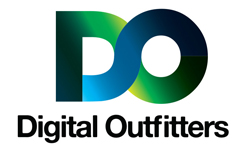Organizations & Associations
If possible, use organizations and associations to help promote your website or digital marketing efforts. These groups have spent many years developing their own branding and websites, and have gained a following that is not only substantial in size – but composed of highly targeted individuals – who no doubt have interests like your own. If you’re able to get a link (or even better, a profile) on one of these sites that links back to your website – you’ll have the benefit of a quality link, from the organization or association that has high-value, established trust & history with your target audience.
Chamber of Commerce
Your local chamber is a quality source for link building opportunity. Don’t have a membership? Well, this might help justify the cost – as most members will search the chamber for service/product providers in their area, more often that advertising or other methods. Apply for a membership by calling your local chamber for information. Ask the representative on the phone about building a member page, or providing contact information for your chamber member listing page. Ask them if you’re allowed to add a link to your website on the page as well, as this can prove valuable for SEO purposes. If you remember in the SEO section of this book, we described the ‘gold-dust’ principal – and the chamber websites are absolutely littered with gold dust. Give them a link, and the chamber visitors will track some of that value back to your property!
Local Business Organizations
When you are searching for your business online, you’ll no doubt run across an organization or two, especially if you’re in a highly competitive industry. If you’re a lawyer, doctor, zoologist, dentist, construction worker… there are more organizations than there are individual industries. There are a wide variety to choose from – and if you’re able to qualify for a membership (some might have strict rules/regulations to qualify), you may be able to create a page full of contact information, details on your services/product, and (most important) your website address. Use this link to your advantage! Build out a page just for your organization – add content that your organization would be looking for, such as discounts, details for other members, and information that might pertain to a fellow organization person. Adding this information to a specific page will help build up that page for other people who could potentially be looking for a service/product provider who is also a member of a certain organization.
The potential costs of membership to an organization should be weighed against the benefits (this sounds very simple, but is in fact a completely overwhelming chore). Think about any potential traffic that you could gather from the organization, along with any opportunities/’extracurricular’ activities that you might be able to attend and hand out business cards. Think about social events, ‘grand openings’, or members-only events that you could visit and gain some interest in your services or product. If you could calculate the sales potential from these events, and come up with a percentage of actual sales from the events, you could effectively come up with a ‘conversion rate’ for the organization. Each organization could have different quantitative values, so it’s important to not lump a more ‘social/community/education’ organization with one that is more ‘business/sales’ oriented. Choose your organization wisely, and think of the possibilities for marketing your business (besides link building) in your advertising ventures.
Meetups
If you have the chance to take part in local meetups, you should attend. These meetups can be centered around a discussion, small business growth, or other interests. I would highly suggest you attend a couple meetups that have to do with digital marketing, or how to market your small business. These meetups are usually informal, don’t have a very structured or rigid timeline, but allow for the attendees to speak up and voice their opinion or thoughts on any number of topics. Usually, the topic is pre-chosen for a meetup – so you don’t have to worry about being steered off into left field by someone who wants to hijack the conversation. Besides being a great place to learn about the topic in general, it’s a great way to network with people who are working in the same industry – and are willing to work together towards the common goal.
Business Cards
Bring business cards and some basic marketing material to any events you attend, and distribute them to anyone you meet. You never know the next time that someone you meet will have a question about your business or skills! Also, make sure to collect business cards from people you meet so that you can call on their services/skills when necessary. Business cards are a very inexpensive way to show that you are serious about your business, and that you understand the worth of networking offline. I know, this is a digital marketing book – but sometimes it’s nice to think about some of the traditional methods that are still working as they have for many years. A well printed, cleanly presented business card – along with a good handshake are still two of the best ways to gain respect from a potential customer. Next on that list… a clean website, and a solid digital marketing presentation.
